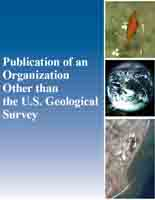Searles Lake occupies a closed basin harboring salt-saturated, alkaline brines that have exceptionally high concentrations of arsenic oxyanions. Strain SLAS-1T was previously isolated from Searles Lake (R. S. Oremland, T. R. Kulp, J. Switzer Blum, S. E. Hoeft, S. Baesman, L. G. Miller, and J. F. Stolz, Science 308:1305-1308, 2005). We now describe this extremophile with regard to its substrate affinities, its unusual mode of motility, sequenced arrABD gene cluster, cell envelope lipids, and its phylogenetic alignment within the order Halanaero-bacteriales, assigning it the name "Halarsenatibacter silvermanii" strain SLAS-1T. We also report on the substrate dynamics of an anaerobic enrichment culture obtained from Searles Lake that grows under conditions of salt saturation and whose members include a novel sulfate reducer of the order Desulfovibriales, the archaeon Halorhabdus utahensis, as well as a close homolog of strain SLAS-1T. Copyright ?? 2009, American Society for Microbiology. All Rights Reserved.


